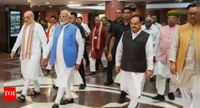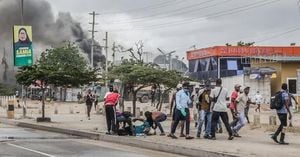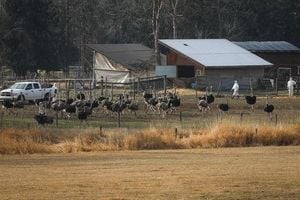On August 17, 2025, the National Democratic Alliance (NDA) made a decisive move in India’s political landscape, nominating C P Radhakrishnan as its candidate for the upcoming Vice-Presidential election. The announcement, which followed a high-stakes meeting at the Bharatiya Janata Party (BJP) headquarters in New Delhi, has set the stage for a contest that is as much about political strategy as it is about constitutional duty.
The BJP Parliamentary Board, chaired by Prime Minister Narendra Modi and attended by a constellation of senior leaders—including Union Home Minister Amit Shah, Defence Minister Rajnath Singh, and BJP President J.P. Nadda—convened to finalize the NDA’s choice. According to The Economic Times, the urgency behind the meeting was heightened by the abrupt resignation of former Vice-President Jagdeep Dhankhar on July 21, 2025, who stepped down citing health reasons. While official statements pointed to health concerns, political circles buzzed with speculation about possible underlying differences.
In a show of unity and swift decision-making, the NDA authorized Modi and Nadda to select the candidate, with the expectation that the Rashtriya Swayamsevak Sangh (RSS) would endorse the final choice. The process was emblematic of the close ties between the BJP and the RSS, a relationship that has long shaped the party’s internal dynamics and public face.
Several names were reportedly on the table, with Gujarat Governor Acharya Devvrat, Karnataka Governor Thawarchand Gehlot, Sikkim Governor Om Mathur, and Jammu and Kashmir Lieutenant Governor Manoj Sinha all considered for the prestigious role. Each potential candidate brought unique strengths—Devvrat, for instance, was seen as a way to appeal to the influential Jat community, while Gehlot’s candidacy could have strengthened the party’s outreach to backward caste voters. Yet, it was C P Radhakrishnan, the sitting Governor of Maharashtra and a veteran BJP leader from Tamil Nadu with deep RSS roots, who ultimately received the nod.
Radhakrishnan’s nomination is not just a personal milestone; it’s a calculated political maneuver. As The Economic Times noted, Radhakrishnan hails from the Gounder caste, an Other Backward Class (OBC) community with significant clout in Tamil Nadu—a state scheduled for assembly polls in 2026. By choosing a candidate from this influential group, the NDA has signaled its intent to strengthen its base in southern India and court OBC voters, a demographic that has become increasingly pivotal in national politics.
The response from NDA allies was swift and enthusiastic. Telugu Desam Party (TDP) president and Andhra Pradesh Chief Minister N Chandrababu Naidu was among the first to publicly congratulate Radhakrishnan. In a post on X (formerly Twitter), Naidu stated, “Congratulations to Hon’ble Shri C P Radhakrishnan Ji on being announced as the NDA’s Vice Presidential candidate. A senior statesman and respected leader, he has long served the nation with distinction. The Telugu Desam Party warmly welcomes his nomination and extends its full support.”
Union minister and Lok Janshakti Party (Ram Vilas) chief Chirag Paswan echoed this sentiment, highlighting the NDA’s commitment to inclusivity. “Under Prime Minister Narendra Modi’s leadership, the National Democratic Alliance has always prioritised the policy of social justice, inclusion, and development for all. The nomination of Radhakrishnan is a living example of this resolve,” Paswan posted on X.
Support also poured in from the Hindustani Awam Morcha (Secular). Its chief, Union minister Jitan Ram Manjhi, declared, “We fully support the NDA candidate for Vice President, C P Radhakrishnan. We stand with the NDA from the streets to the Parliament.” The chorus of endorsements from key regional and national allies underscores the NDA’s efforts to project a unified front ahead of the September 9 election.
Behind the scenes, the machinery for the Vice-Presidential poll is already in motion. Defence Minister Rajnath Singh has been tasked with overseeing the election process, while Parliamentary Affairs Minister Kiren Rijiju will serve as the polling agent. The NDA has also summoned all its Chief Ministers and Deputy Chief Ministers to Delhi on August 21 for the formal nomination filing, another move designed to showcase alliance solidarity.
With the NDA holding a comfortable majority in the electoral college—which comprises members of both the Lok Sabha and Rajya Sabha—the alliance is widely expected to secure an easy victory, provided the election is contested. However, the opposition INDIA bloc is not sitting idle. According to The Economic Times, they are set to meet on August 18 to discuss their own candidate, raising the prospect of a competitive race.
The selection of Radhakrishnan is emblematic of the BJP’s broader strategy: balancing the demands of caste politics with the imperatives of party ideology and alliance management. The Gounder community’s influence in Tamil Nadu, coupled with Radhakrishnan’s longstanding ties to both the BJP and RSS, makes him a candidate who ticks several strategic boxes. As reported by The Economic Times, the NDA’s choice reflects “strategic political calculations, balancing caste dynamics and RSS influence.”
Yet, the path to the Vice-Presidency is about more than just numbers and alliances. The abrupt departure of Jagdeep Dhankhar, the former Vice-President, has cast a shadow over the proceedings. While health reasons were cited, the timing and circumstances have fueled rumors of deeper political rifts within the ruling coalition. Whether Radhakrishnan’s nomination will help smooth over these fissures or simply paper them over remains to be seen.
The stakes are high—not just for the NDA, but for the broader trajectory of Indian politics. The Vice-President’s role, while largely ceremonial, carries significant symbolic weight. It is a position that sits at the intersection of legislative authority and constitutional responsibility, and the choice of candidate often reflects the prevailing winds in national politics.
As the country awaits the opposition’s move and the formalities of the nomination process, all eyes are on C P Radhakrishnan and the alliance that has rallied behind him. The coming weeks will reveal whether this carefully orchestrated show of unity translates into lasting political advantage—or if the undercurrents of dissent and competition will resurface as the election approaches.
For now, the NDA’s message is clear: it is ready, organized, and determined to keep its grip on one of the highest constitutional offices in the land. The Vice-Presidential election of 2025 may well be remembered as a turning point, not just for the individuals involved, but for the evolving dynamics of coalition politics in India.




